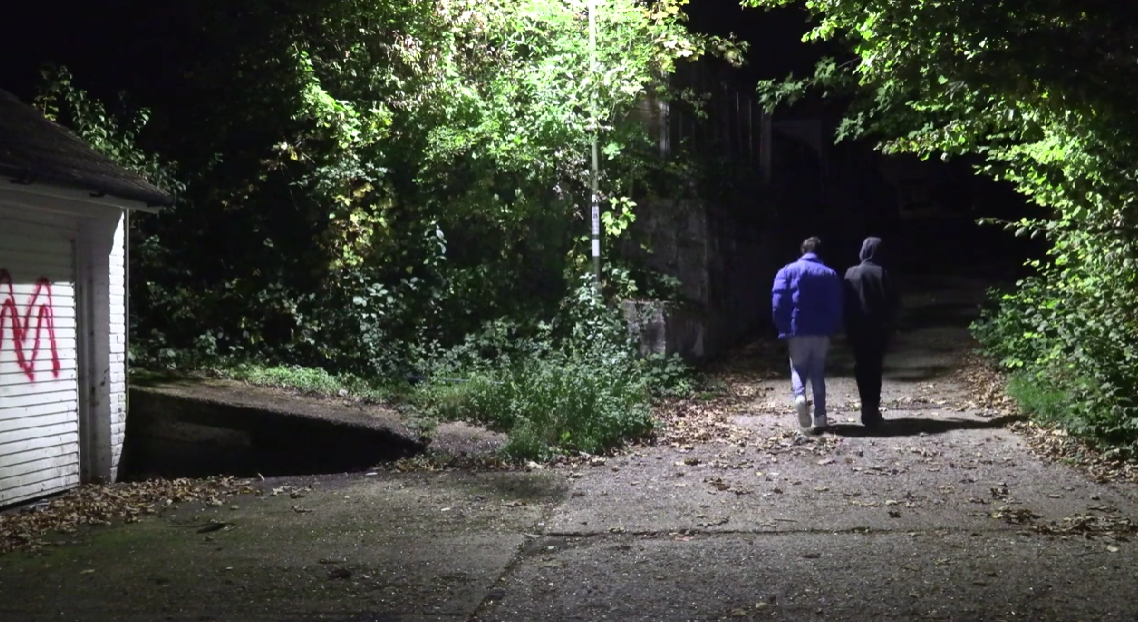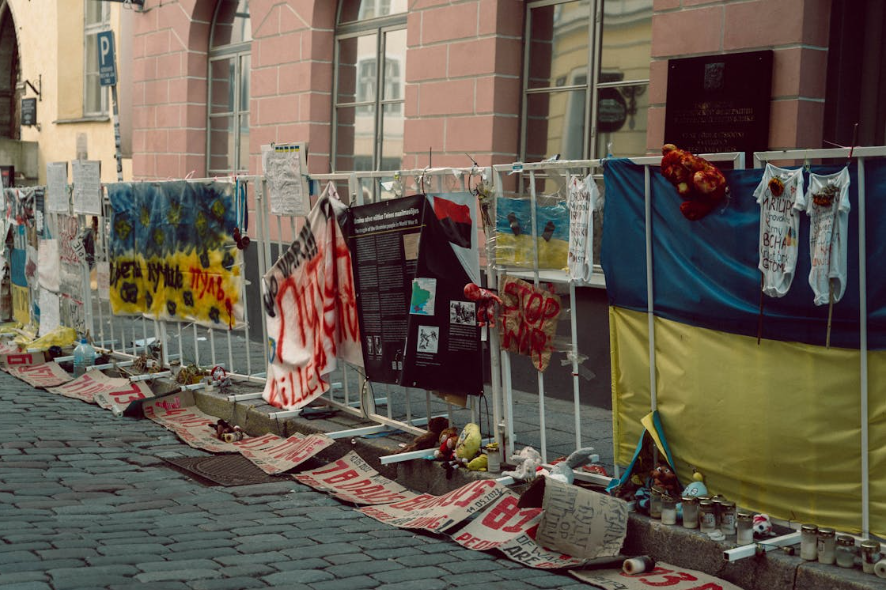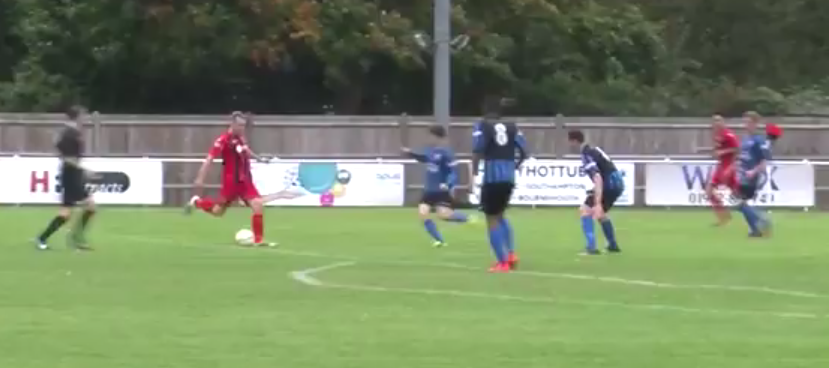News
Hostels, addiction, and hope: A personal story from Winchester’s homeless

As the festive season begins in Winchester, with the Christmas market springing up beside the cathedral and the high street bustling with holiday shoppers, many will head home to warm houses and cozy beds.
But for people like Tyler, a rough sleeper on Winchester’s High Street, the holiday season is another reminder of the harsh realities of life on the streets.
His story offers a sobering glimpse into the difficulties faced by the homeless in the city – and the challenges of escaping that cycle.
At just 14-years-old, Tyler became addicted to heroin.
“My mum used to sell heroin and crack, and I’d steal it from her.
“I’d sit in my room using, and by 15 or 16, I’d get the ‘rattles’ – you wouldn’t know why you’d feel like that, but it’s the drugs making you feel that way.
“At that age, you’re not self-aware of it, but it kicks off a whole thing. I started drinking and using drugs, not to get high, but more to ask, ‘where am I going to lay my head tonight?'”
“But I don’t want anyone to feel sorry for me,” he says, underscoring the resilience he’s had to develop to survive in the face of hardship.
The cycle of hostels and street life
After struggling with addiction and living in a volatile home environment, Tyler found himself moving between hostels and the streets.
He recalls the tension of hostel life, where he would often share rooms with 30 other men.
“You don’t always get on with people; you argue, you get into fights, and eventually, you get kicked out. Then you’re on the streets for months.”
It wasn’t just the danger of living with so many people; the emotional toll of constant instability took a heavy toll.
Tyler’s efforts to secure permanent housing were often blocked by his history of temporary stays and hostel disputes.
“You go to another hostel, get into more arguments or little things irritate you, and when you try to get a place for yourself, they don’t want to give you one,” Tyler explains.
“They say, ‘you’ve been here for two months and there for three months, but you keep getting kicked out. We won’t give you a place because we know you’ll mess that up too’.”
For Tyler, it is a brutal cycle that feels nearly impossible to break.
Despite his best efforts, he continues to find himself back in temporary, unstable living conditions.
The emotional exhaustion of never truly having a place to call his own is something he has come to accept, even as it wears him down.
Harsh realities: theft and survival
Life in hostels was not just mentally taxing – it was physically difficult too.
Tyler shares the harsh reality of surviving in those environments.
“People steal your clothes there. I’ve put my clothes in the tumble dryer, and I’ve come downstairs, and my clothes are gone.
“Like that, that’s how it gets. It’s fine for survival, I suppose. But it is what it is.”
Tyler’s words highlight the brutal, dog-eat-dog nature of life in these temporary accommodations.
There’s no guarantee of respect or security, only a constant struggle for basic survival.
For Tyler, even something as simple as having clean clothes is a fight – one he’s had to grow accustomed to.
Local charities step up to help
Tyler’s personal struggle is not unique.
Homelessness in Winchester is a growing issue, and local charities are working to support the increasing number of individuals experiencing homelessness.
Organisations like Trinity Winchester, Winchester Beacon, and the Salvation Army provide essential services such as hot meals, emergency shelter, and mental health support.
These groups have been particularly important as temperatures drop, offering critical respite from the cold.
According to Trinity Winchester, which provides outreach, accommodation, and support services, they have seen a marked increase in the number of people seeking help in recent months.
The organisation reports that in 2023 alone, they assisted more than 1,000 individuals through their services.
However, local charities are also facing significant pressures.
With rising demand for services and a shrinking pool of resources, some organisations are finding it increasingly difficult to meet all the needs of the city’s homeless population.
The strain of housing shortages
The housing crisis in Winchester adds another layer of complexity to the situation.
There is currently a four-year wait for a one-bedroom property in the city, according to Winchester City Council.
With rising rents and limited affordable housing options, securing stable accommodation is becoming an ever-increasing challenge for people trying to leave homelessness behind.
In addition, the cost-of-living crisis is exacerbating the problem, as housing costs have soared while support for low-income households has remained relatively static.
For those who have experienced periods of homelessness, the road to permanent housing can be long and complicated.
Tyler’s own struggle to secure stable accommodation is an example of how deeply entrenched issues can make it harder to move forward.
Councillor Liz Fairhurst, Hampshire County Council’s Executive Member for Adult Social Care and Health, said: “At this time of year in particular, it is so important that those who find themselves homeless are able to access a safe place to sleep, while in the longer term secure support to break the cycle of homelessness, poverty and exclusion – we are therefore very pleased to be joint funding this vital facility in the city.”
Is Winchester doing enough?
The question of whether Winchester is doing enough to support its homeless communities is a complex one.
On the one hand, the city has several organisations and services dedicated to providing shelter, food, and support.
However, the increasing demand for these services, combined with limited funding and resources, means that there are still significant gaps in care.
The Winchester Beacon, which focuses on supporting people facing homelessness or housing instability, estimates that nearly 40% of people who access their services do so multiple times, highlighting the cyclical nature of homelessness in the area.
Charities agree that more investment in mental health services, affordable housing, and addiction recovery programs are essential for breaking this cycle.
Winchester Beacon makes it clear their resources are strained.
They states on their website that their ability to provide safe accommodation, meals, and tailored support services relies heavily on donations and volunteer efforts.
They say that without volunteers, “they simply couldn’t do what we do,” emphasising their dependency on community contributions and partnerships.
A winter of uncertainty
As winter sets in, the outlook for Winchester’s homeless population remains uncertain.
Charities, volunteers, and local government agencies continue to provide essential support, but the combined challenges of limited resources, increasing homelessness, and the growing cost of living crisis are likely to make this a difficult winter for many.
Tyler’s story serves as a reminder of the harsh realities faced by homeless individuals in the city and the complex nature of homelessness itself.
While local charities and organisations continue to do important work, the need for long-term solutions – such as increased affordable housing, mental health services, and addiction recovery support – has never been more pressing.
For now, Winchester’s homeless residents must rely on the support of these organisations and the wider community as they face a challenging winter ahead.
But the ongoing issue of homelessness is far from resolved, and solutions will require collective action and sustained investment.
News
Greens become third-largest political party in the UK

Membership of the Green Party has overtaken the Conservatives, making them the third largest party in the country.
The party now has more than 126,000 members, an 80% increase since Zack Polanski was elected as leader last month.
After his appearance on BBC One’s Laura Kuenssberg show, Polanski said the Green Party saw 1,000 new members join in just over two hours.
The party’s leader insists that “British politics is changing” and previous “support for old-style parties” is “shrinking”.
The Green Party is gradually climbing the polls in voting intention, but Reform UK close to the top with over 260,000 members.
The last official figures published in August 2025 shows that Farage’s party need only 70,000 more members to match with Labour.
While countering Reform, the Green Party reportedly now have more than double the members of the Liberal Democrats.

Polanski declares that more people in the country are “choosing a new kind of politics” where they’re offered “a bold, hopeful vision of prosperity, equality and unity”.
A rise in support for the Greens suggests many are moving away from a “broken” two party system, according to Polanski.
Their increase in numbers “reflects growing public frustration with the political status quo”.
News
Residents fear for safety over Winchester’s nighttime lighting policies

Many Winchester residents have spoken out, saying they feel unsafe at night.
Some have feared for their safety, claiming they cannot even see where “curbs start and finish” alongside Romsey Road.
While those who must travel home late due to unsocial working hours have expressed anxiety about walking home at night.
Earlier this year, Korine Bishop, chief inspector from Hampshire Constabulary, announced there was a 3.66% rise in night crime in Winchester.
Hampshire County Council took an approach in 2019, to tackle saving money by switching off street lights between 1am – 4am.
Yet earlier this year, they extended the switch-off by an hour each way.
Local councillor David Harrison said: “The evidence that more crime takes place because of a lack of lighting isn’t really there.”
As winter approaches, the growing unease among residents raises urgent questions about community safety and the effectiveness of current council lighting policies.
Despite this, approaches have been taken to ensure nighttime safety for younger people in Winchester.
Jessica Dunipace, from the Students’ Union welfare team, has urged students to “travel home with somebody and catch a taxi when possible” regardless of gender, race, or age.
Ms Dunipace also said that “despite Winchester being one of the safest cities, there are still incidents that can happen”.
News
The dramatic spike in Russian aggression and provocation within Europe, and why the Baltics matter

Anti-Ukraine War Protest Outside of The Russian Embassy, Tallinn, Estonia. (By Maksim Romashkin)
Drones causing the closure of airports in Poland, and Russian fighter jets taunting the West with provocative flyovers.
These are only two examples of how Russia is signalling its potential military push further into the European continent.
While Ukraine is Russia’s main focus, many people are not aware that the North Atlantic Treaty Organisation (NATO) provides Ukraine with the vast majority of its long-range missile systems, as well as things such as armoured battle tanks and anti-surface-to-air missiles. Recently, NATO has allowed for Ukraine to use ATAKMS, as well as Javelin missiles, against military targets within Russian territory.
Due to this, it is clear why Russian President Vladimir Putin is under the strong belief that Russia and the NATO alliance are at war with each other, and can easily sell this idea to his population through state-funded propaganda.
Russia’s Recent Airspace Violations:
While NATO is surgical and cautious when it comes to potentially poking the Russian bear, the same cannot be said about Russia itself. In September 2025 alone, Russia has violated the airspace of five NATO member states.
Poland saw over a dozen drones enter its airspace on the 9th of September, with them being flown over Ukraine and Belarus.
Airports within the cities of Krakow and Warsaw were closed, as fighter jets scrambled to intercept the drones. On the 13th, a Russian drone entered Romanian airspace, just over the Ukrainian border, where jets were also deployed to track and monitor its movement, before it crossed back over into Ukraine.
As well as these blatant airspace violations, between the 22nd and 28th of September of this year, numerous drones were seen hovering around airports and military assets within Denmark and Norway.
These sightings severely disrupted air travel within the region, with the major cities of Copenhagen and Oslo shutting down their airports for multiple hours due to safety concerns.
Arguably, the most concerning airspace violation within recent years came on the 19th of September, when the Baltic nation of Estonia reported that three Russian MIG-31 fighter jets entered their airspace over the Gulf of Finland, a short distance away from the capital of Tallinn.
While Russia violating the airspace of any nation is seen, and most certainly should be seen, as a major security threat, when nations such as Estonia are targeted, the threat of further military aggression or even invasion from the Kremlin is significantly heightened.
Due to Estonia being less than a hundred times smaller than Russia, and having a completely incomparable amount of military strength, with Russia having around one million active military personnel, and two million reservs, and little Estonia only having around 230,000 reserves at absolute most, this fear is even more exacerbated, as the lives of all Estonian citizens would be in immediate danger during the first few hours and days of an invasion scenario.
The Significance of the Baltics:
Countries such as Estonia are especially vulnerable to Russian influence and acts of sabotage, primarily due to their high Russian diaspora, and their shared history as part of the soviet system.
Latvia and Lithuania suffer similarly tense relations with their neighbour; however, Estonia is home to the city of Narva in its North-East, which sits on the west bank of the Narva River, with Russia watching like a hawk on the other side.
The significance of Narva lies within its demographics, with around 88% of the city’s inhabitants being Russian, with most of them even holding Russian passports. Additionally, due to Russia’s pariah status around the world, there have been numerous documented cases of the Russian population within Estonia being discriminated against, with the Russian language being heavily discouraged, and most of the poverty within the country being seen within Russian-speaking households.
Due to the issues faced by native Russians within the Baltic States, it is easy for military planners within NATO to fear that the Kremlin will attempt the utilise the same excuse that it implemented when undertaking its full-scale invasion of Ukraine in February of 2022, which was that the Ukrainian government were undertaking a genocide against the Russian minority within the nation.
This argument was, of course, not true; however, it is not out of the question that Russia wouldn’t one day attempt to accuse a nation like Estonia of such crimes, propping up either a limited or full-scale invasion shortly after.
Thankfully, of course, Estonia and the other Baltic States are safely nestled under the NATO nuclear umbrella; however, many governments around the world are speculating if the member states within the alliance will risk a third world war and the potential for nuclear annihilation over a minuscule country like Estonia.
If Russia were to seize the city of Narva, for example, the government in Tallinn may very well deem it necessary to enact Article 5, deeming the attack as an attack on all other NATO members.
The question is, however, would the United States, or any other powerful member, risk the lives of their populations for a small city in Estonia with only 53,000 people?
Due to this extremely crucial question, many NATO members are spending a colossal sum of money preparing for Russia to eventually test the waters of the alliance, by potentially dipping its toes into a vulnerable state such as Estonia.
Countries such as Poland, and the three Baltic States of Estonia, Latvia, and Lithuania are some of the highest percentage of GDP spenders within the alliance, with the highest of these being Estonia, which has committed to reserving 5.4% of its entire GDP, of around 42 billion USD, solely for defence spending.
While not as high as Estonia’s spending, Latvia and Lithuania have committed to spending 3.15% and 3.9% of their GDPs on defence, respectively.
While the likelihood of war rearing its ugly head to ravage the European continent once again is not guaranteed, the concept of it being above zero makes it critical for European and North American governments within the NATO alliance to start preparing and arming for the worst, as if the worst may come, being unprepared is simply not an option.
-

 Football9 years ago
Football9 years agoFootball – Winchester City vs Didcot Town
-

 Community9 years ago
Community9 years agoWinnall community association renovated
-
Community8 years ago
Hampshire’s frontline services at risk
-

 Hampshire8 years ago
Hampshire8 years agoUniversity of Winchester Parking Trouble
-
Community8 years ago
Knight Bus unveiled at school
-

 Community8 years ago
Community8 years ago‘Controversial’ new plans take shape in Eastleigh
-

 Winchester News Online8 years ago
Winchester News Online8 years ago#MiracleMissy Update
-

 Bulletins7 years ago
Bulletins7 years agoWINOL 20 November 2018
